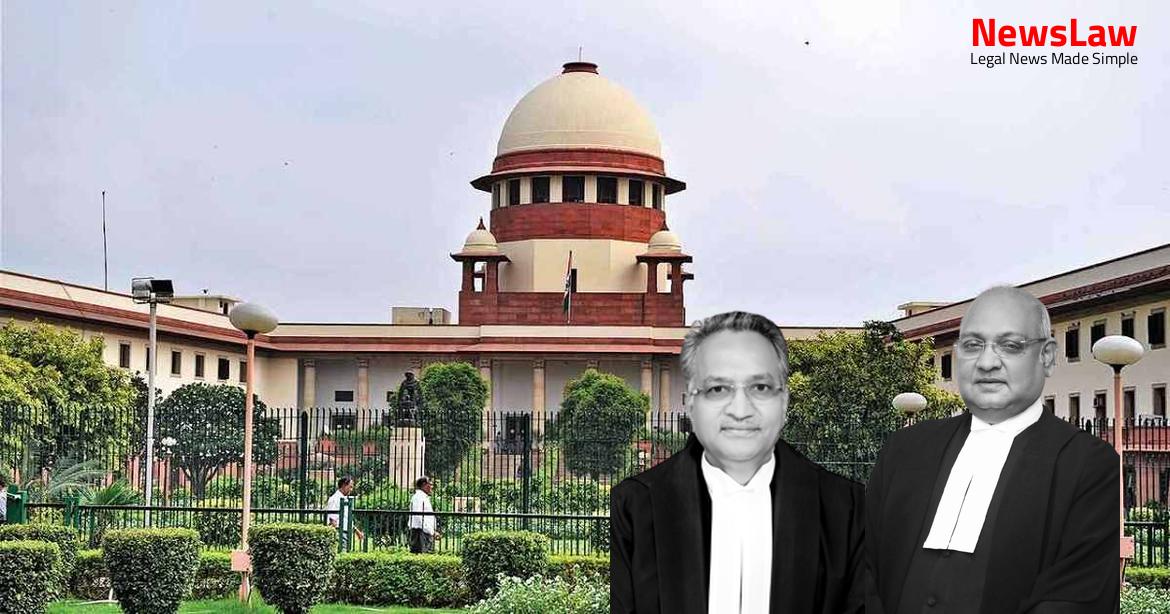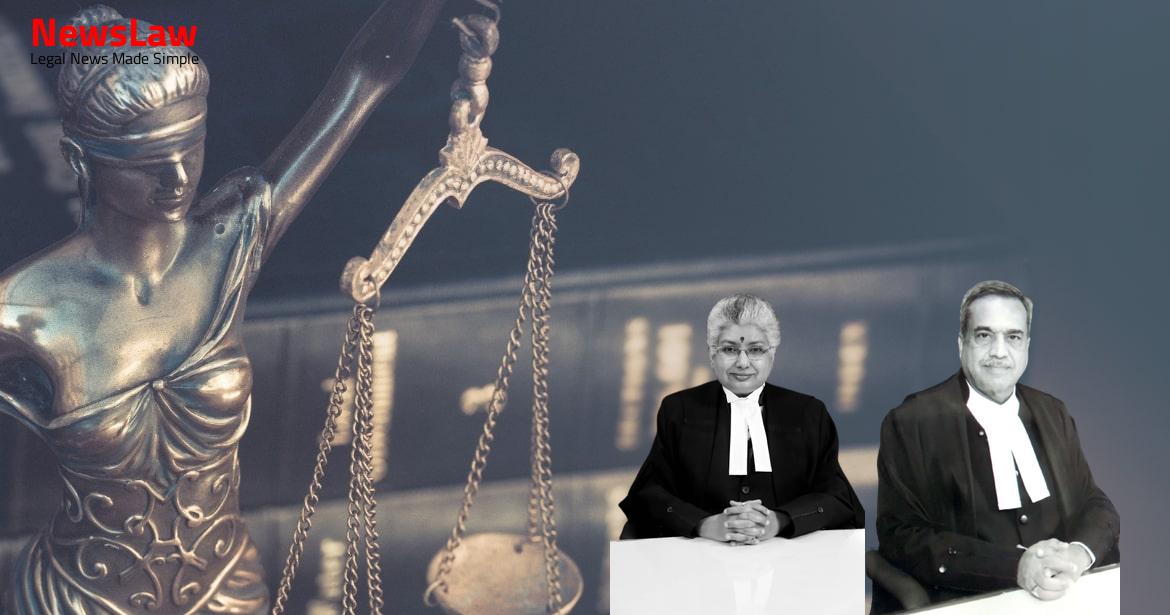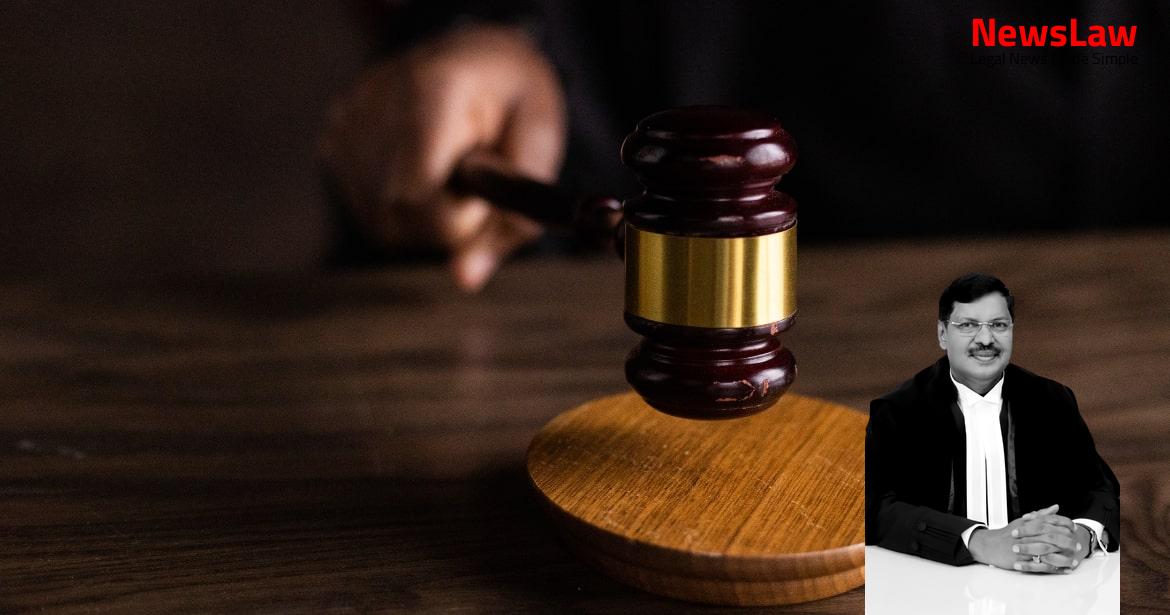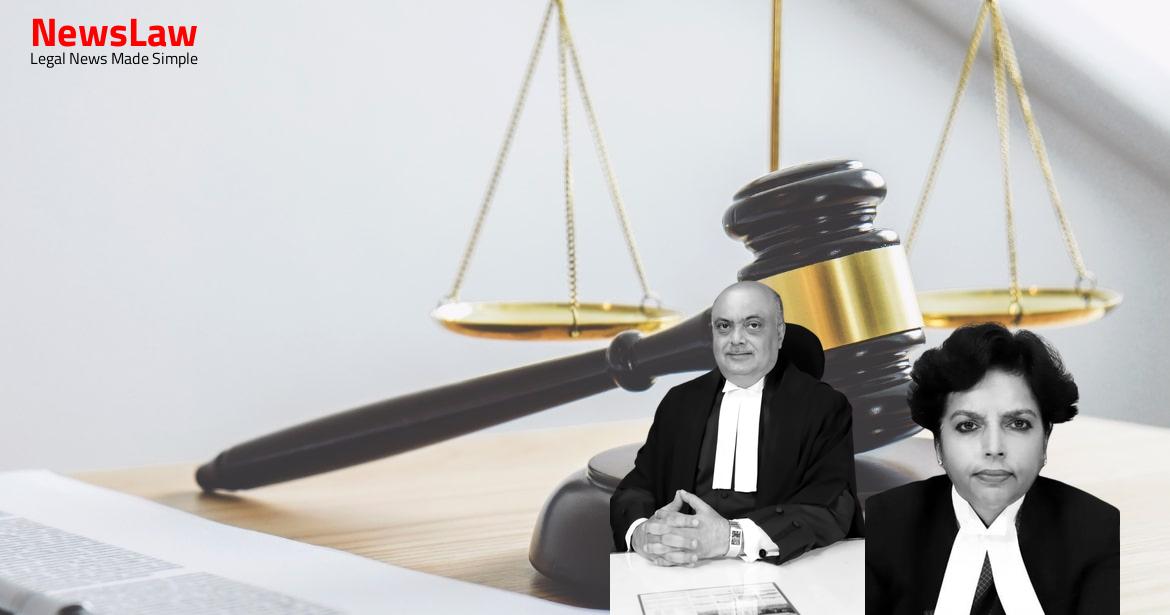In a landmark judgment, the Supreme Court of India has upheld the conviction of the accused in the case of Sher Singh’s death by setting him on fire. The High Court’s decision, affirming the Trial Court’s findings, brings closure and justice to the victim’s family. This case, which involved detailed examination of dying declarations and witness testimonies, sets a strong precedent for accountability in criminal cases.
Facts
- The High Court reappreciated the evidence and agreed with the Trial Court’s decision based on the dying declarations made by the deceased.
- The High Court pointed out that the entries in the PCR Form were made by PW-7, indicating the involvement of accused Purshotam in previous quarrels with the deceased.
- The Trial Court convicted the accused-appellants under Section 302/34 IPC and sentenced them to life imprisonment, which was affirmed by the High Court.
- The accused persons appealed the conviction in separate appeals before the High Court of Delhi.
- The High Court found discrepancies in the statement of ASI Harish, which undermined his credibility and raised doubts about the information provided by him.
- The appeals challenged the judgments of the Trial Court and the High Court which upheld the conviction of the appellants under Section 302 read with Section 34 IPC.
- The prosecution relied on dying declarations of the deceased to establish the involvement of the appellants in causing the death of Sher Singh by setting him on fire.
- The Trial Court held Purshottam liable based on circumstantial evidence despite no direct evidence of his overt act in the crime.
- SI Rajesh Kumar conducted initial investigation after receiving information about a man being set on fire at a location in Uttam Nagar, Delhi.
- The injured person, identified as Sher Singh, was shifted to Safdarjung Hospital where his statement was recorded by Dr. Sushma.
- In his statement, Sher Singh accused Purshottam and Suresh of setting him on fire.
- Subsequently, SI Rajesh Kumar recorded another statement from Sher Singh after he was declared fit to speak by Dr. Rajesh Verma.
- The case was initially registered under Section 307 IPC but was converted to one under Section 302 IPC after Sher Singh’s death.
- The investigation was taken over by Inspector Om Prakash who conducted the inquest proceedings and sent the body for post-mortem.
- The prosecution examined a total of 19 witnesses, including family members of the deceased, police officers, doctors, and other individuals who were present at the incident site.
- The evidence presented included dying declarations, post-mortem report, and witness testimonies to establish the involvement of the accused in the crime.
- The Charge-sheet was filed, and the case was tried as Sessions Case No. 2 of 1998 in the Court of Additional Sessions Judge, Delhi.
Also Read: State of Rajasthan v. Sheeshpal: Upholding Justice and Fairness
Arguments
- The learned counsel has raised several contentions to challenge the conviction and sentencing in the impugned judgment.
- One contention is that the conviction of the appellant is based on speculations without proper proof of identity.
- It is argued that the alleged dying declarations of the deceased are unreliable due to various infirmities and inconsistencies, lack of corroboration, and potential manipulation.
- The counsel questions the validity of the thumb impressions obtained by PW-16, suggesting the document may be doctored.
- There is mention of the failure to prove motive on the part of the appellant, citing hearsay testimony and lack of concrete evidence.
- The prosecution’s handling of the dying declaration process is criticized for not following proper procedures as per the Delhi High Court Rules, casting doubt on the authenticity of the statement.
- The absence of eye-witnesses and reliance on circumstantial evidence is highlighted as a weakness in the prosecution’s case.
- The counsel argues that the crowded market setting of the incident makes it implausible for the accused to escape unnoticed, casting further doubt on the prosecution’s case.
- The prosecution argues that the dying declarations are reliable and have been accepted by the Trial Court and the High Court.
- The prosecution cites the Constitution Bench decision in Laxman v. State of Maharashtra as well as other relevant case laws to support the acceptance of dying declarations.
- It is emphasized that the two dying declarations are consistent on material points and features, hence valid.
- Point raised about the presence of relatives or acquaintances during the recording of one dying declaration is dismissed as the possibility of tutoring is ruled out.
- The argument regarding the thumb impression on the dying declarations is countered by pointing out that one of the declarations does not even have a thumb impression.
- Regarding the alleged 100% burns suffered by the victim, it is argued that there is no evidence to suggest that the victim’s hand/palm was too burnt to provide a thumb impression.
- The prosecution maintains that the particulars of the victim and offenders in the dying declarations could only have been known to the victim, strengthening the reliability of the statements.
- Reference is made to the principle from the case Sharad Birdhi Chand Sarda v. State of Maharashtra regarding giving the benefit of doubt to the accused when two views on evidence are possible.
- An argument about the absence of liquor in the post-mortem report despite the victim’s statement of consuming alcohol is countered as not affecting the reliability of the dying declarations.
Also Read: Analysis of Preferential Transactions and Financial Creditor Status
Analysis
- The dying declarations made by Sher Singh to Dr. Sushma and SI Rajesh Kumar were found to be reliable and accepted by both the Trial Court and the High Court.
- The statement recorded by SI Rajesh Kumar was considered as the dying declaration of Sher Singh as it contained specific details provided by the victim himself.
- The fit mental state of Sher Singh at the time of giving the statements was highlighted as a factor leading to the credibility of the dying declarations.
- The presence of certain specific details in the statements made by Sher Singh, such as names, addresses, and roles of the accused, further supported the authenticity of the dying declarations.
- The role of thumb impression on the statement of Sher Singh was also discussed, and it was found to be genuine and not forged.
- The lack of motive for the accused persons to falsely implicate themselves in the crime was considered insignificant given the decisive evidence provided by the dying declarations.
- The failure to establish a motive positively was not viewed as fatal to the prosecution case, especially when the dying declarations were deemed credible.
- The involvement of political affiliations and past quarrels were mentioned but were not deemed relevant in challenging the validity of the dying declarations.
- The thorough scrutiny of the testimonies of witnesses and medical evidence supported the Court’s decision to rely on the dying declarations for conviction.
- The dying declarations engendered confidence and trustworthiness due to the circumstances under which they were obtained and the absence of any evidence of manipulation or fabrication.
- The High Court analyzed the statements made by the victim in the MLC and the dying declaration.
- It was observed that the victim mentioned specific names and details in the statements which indicated the veracity of the information provided.
- The Court emphasized on the importance of the declarant being in a fit state of mind and making a voluntary statement.
- The Court referred to previous judgments to establish the admissibility and reliability of dying declarations.
- It was noted that the absence of a certification by a doctor regarding the fit state of mind does not render a dying declaration inadmissible.
- The Court highlighted the need for close scrutiny of the reliability of dying declarations, especially in the absence of cross-examination.
- The principles regarding the recording of dying declarations and their admissibility were summarized for clarity.
- The Court affirmed that a dying declaration, if found to be true, voluntary, and trustworthy, can form the basis of conviction even without corroboration.
- In cases where doubts exist regarding the mental condition of the declarant, the benefit of doubt should be extended to the accused.
- The Court reiterated that the extent of burn injuries does not automatically invalidate a dying declaration if the declarant was deemed to be in a fit state of mind by the recording authority.
- The High Court relied on Parts II, III, and IV of the PCR form to show detailed information about the incident, including the victim’s condition, address, and names of the assailants.
- Statements made by the victim during transportation to the hospital were crucial, as confirmed by the doctor who recorded the details in the MLC report.
- The argument to reduce charges from murder to culpable homicide not amounting to murder was rejected due to the intentional and gruesome manner of the act.
- Both appellants were rightfully convicted under Section 302/34 IPC for causing the victim’s death by setting him on fire, with evidence supporting their involvement.
Also Read: Fair Consideration for Promotion Criteria in Judicial Appointments
Decision
- No case for interference is made out.
- The appeals are dismissed.
Case Title: PURSHOTTAM CHOPRA Vs. STATE(GOVT. OF NCT OF DELHI) (2020 INSC 5)
Case Number: Crl.A. No.-000194-000195 / 2012



